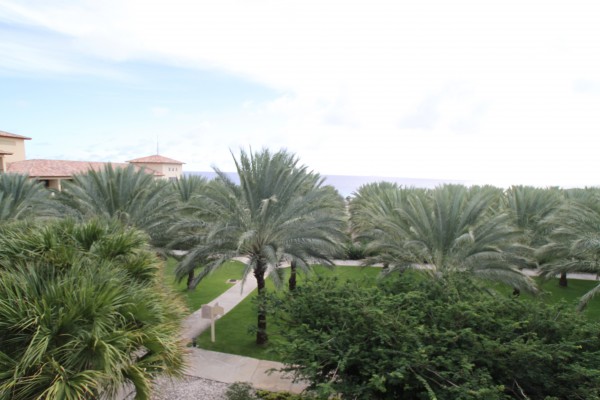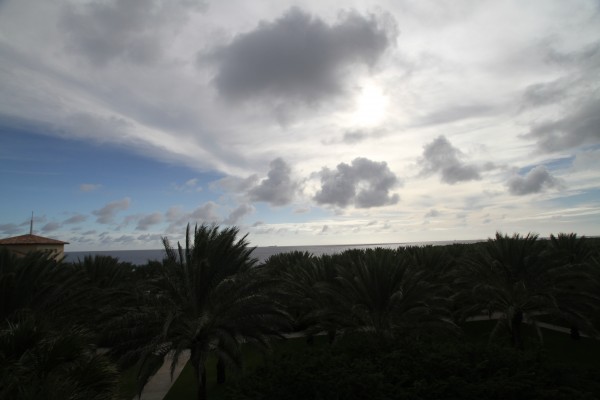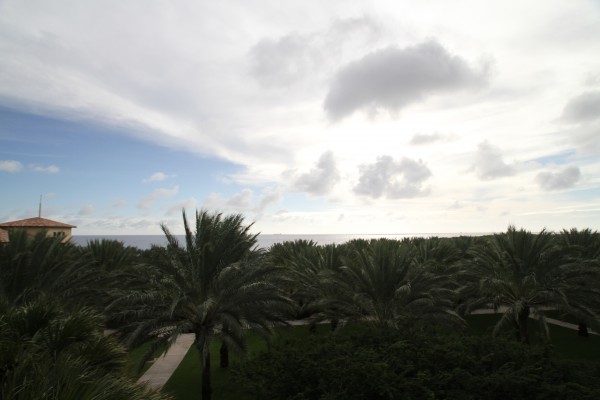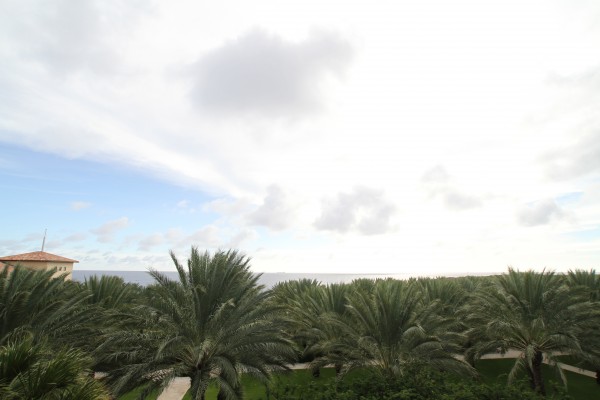Photography buffs know that polarizers can make their ordinary shots look magical, providing color and contrast enhancement to an image. One of the issues I often face is a cloudy sky where the light is diffused and yet its glaring behind me or around those clouds, making it impossible to get a well balanced shot.
Reflected light often shows up as whitish glare that washes out color in an image. A polarizer corrects this problem producing deep, dramatically blue skies. It also removes glare from non-metallic surfaces, such as windows and water. Color saturation in general, especially outdoors, can be improved significantly.
I’ve been wanting to test out the Tiffen polarizer for some time and recently, they sent me one to test out on the road. Note that the below polarizer is sized to fit my wide angle lens on my Camera 7D.
Let’s start with a shot that I nearly gave up on in the Caribbean earlier this year. As soon as I arrived at the Santa Barbara Resort in West Curacao, I immediately wanted to go for a walk through its grounds, but before I set up, I do what I always do when I first arrive at a new property — take a shot of the view from the room.
While it wasn’t overcast, the view from my window was had a ton of clouds in the shot. Clear blue sky was cutting in and out of my shot, making the rest of it washed out. Ever been there? And so, I was left with a washed out sky.
When I made a slight adjustment (1 F stop and then 2), I lost the detail in the trees. When I played around even further, adjusting the F stop and/or the ISO to a variation I thought would work, nothing seemed to work. It was either washed out, I lost the detail or I ended up with a severely overexposed shot like this one – lovely dramatic sky and nothing else.
You have to admit, it is a wonderfully dramatic sky and since I’m a fan of drama in my clouds, I wanted to keep some of it, while losing my foreground. The below is an improvement and frankly, if I spent a little time in Photoshop or Lightroom, I could have fixed the foreground and ended up with a reasonable result.
That said, while I’m a fan of both editing tools and use Lightroom as my go to solution for enhancements, I don’t have the time to deal with the consistent problem of a washed out sky and a dark background – it simply takes more time than I have considering how much time I spend on the road.
Here’s where a polarizer/circular polarizer can really help an amateur or a pro. You generally will have the need for one when you face an issue like I did above, or when your sky is simply too light, clouds or not. It enhances your color on the fly, making the initial shot more natural before you even venture into Lightroom or Photoshop or whatever editing tool you happen to use.
The Tiffen brand is a well known brand that photographers have grown to trust but it may not be as well known to the average shooter who is taking shots while on a luxury travel adventure to the Caribbean and forget about those forever changing skies when you’re on a cruise.
The Tiffen wide angle polarizer is durable and while it is roughly twice the price (roughly $230-240) of a no name brand I picked up at Best Buy a couple of years ago, the difference is worth it. While the shot isn’t precisely the same angle as the first shot above, it’s the same sky and it was taken within 10 minutes of it. A storm was not coming and the sky hadn’t changed, but I did use a polarizer.
While this may not look like a perfect result, making adjustments to get it to “great” in Lightroom is likely a few minutes, not an hour or more.
Truth be told, I’m still new to polarizers and while I fussed around for longer than I should considering how long I’ve been shooting, I still felt like I needed more time with this Tiffen gem of a product. What would it be like in snow I thought? What about the piercing brightness that you get off sand in the dessert and how that impacts your sky and the rest of the shot?
There were so many scenarios I wanted to test out and I wished I had this polarizer during my
Yosemite shoot last year this time. While my shots may look glorious, it’s hard to get a bad shot in Yosemite and remember that I was with pros, two photographer teachers, and a handful of people who had tons of high quality lenses and filters they shared. We also used tripods for nearly every shot and I learned more patience about the art of photography than I ever had in the history of shooting.
Busy people don’t have as much patience nor do road warriors who are on the go frequently and don’t always have the time to wait for the sky to shift in front of their very eyes so they can capture the right lighting for the perfect shot.
Ultimately, a polarizer should be able to produce deeper skies. Simply point your index finger at the sun and with your thumb extended at a right angle (90°), rotate it around the axis of the index finger and it will point out the band of deepest blue from horizon-to-horizon.
A circular polarizer has the same effect as a polarizer and is used on cameras with beam splitting metering systems commonly found on auto focus SLR’s (for most 35mm auto-focus cameras — refer to your camera manual to see if this is a fit for your camera).
If you are a black and white photographer, it’s worth noting is that you can combine a polarizer with a Red 25 for incredibly dramatic black and white landscapes. It also minimizes reflections in black and white and color photography, which I don’t do enough of anymore in its ‘raw’ form.
Tiffen also does a warm polarizer, which combines the benefits of the Linear Polarizer with the warming effect of the 812 Color Warming filter making it ideal for portraits and scenics. Two thumbs up! I am in love with Tiffen’s filters and this one performed as advertised!

Renee Blodgett is the founder of We Blog the World. The site combines the magic of an online culture and travel magazine with a global blog network and has contributors from every continent in the world. Having lived in 10 countries and explored over 90, she is an avid traveler, and a lover, observer and participant in cultural diversity. She is also the founder of the Magdalene Collection, a jewelry line dedicated to women’s unsung voices and stories, and the award-winning author of the bestselling book Magdalene’s Journey
She is founder of Blue Soul Media and co-founder of Blue Soul Earth as well as the producer and host of the award-winning Blue Soul CHATS podcast, that bridges science, technology and spirituality. Renee also founded Magic Sauce Media, a new media services consultancy focused on viral marketing, social media, branding, events and PR. For over 20 years, she has helped companies from 12 countries get traction in the market. Known for her global and organic approach to product and corporate launches, Renee practices what she pitches and as an active user of social media, she helps clients navigate digital waters from around the world. Renee has been blogging for over 16 years and regularly writes on her personal blog Down the Avenue, Huffington Post, BlogHer, We Blog the World and other sites. She was ranked #12 Social Media Influencer by Forbes Magazine and is listed as a new media influencer and game changer on various sites and books on the new media revolution. In 2013, she was listed as the 6th most influential woman in social media by Forbes Magazine on a Top 20 List.
Her passion for art, storytelling and photography led to the launch of Magic Sauce Photography, which is a visual extension of her writing, the result of which has led to producing six photo books: Galapagos Islands, London, South Africa, Rome, Urbanization and Ecuador.
Renee is also the co-founder of Traveling Geeks, an initiative that brings entrepreneurs, thought leaders, bloggers, creators, curators and influencers to other countries to share and learn from peers, governments, corporations, and the general public in order to educate, share, evaluate, and promote innovative technologies.














